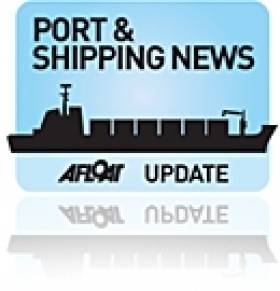Displaying items by tag: Eyjafjallajokull volcanic mountain
Ferry Passenger Boost Recorded for First Half of 2010
The figures reflect the disruption to the aviation industry due to the ash-cloud that erupted from the Icelandic Eyjafjallajokull volcanic mountain in April. This contributed to a large volume in passengers making alternative travel plans by booking with ferry operators.
During the week of the main closure to European air-space, ferry operators noted a three-fold increase in the demand for foot-passenger bookings throughout the main Irish Sea routes. The IMDO estimate that an additional 106,000 passengers took the ferry option compared to the same time period in 2009.
On the continental routes between Ireland to France, volumes increased 25% in the second quarter of 2010. There are three routes operated by four ferry operators. Over 30% of the passenger market is conducted within the second quarter of 2010, marking the beginning of the tourist season. Therefore any increase in passengers volumes from this time is likely to have a positive impact for the balance of the full year figures.
In the months between March to May, the increase in sea-passengers was up 14% year-on-year. While the market demand on English Channel routes, which accounts for 90% of the traffic, saw passenger numbers surge 13% in the second quarter of 2010 compared to the same timeframe of the previous year.
The largest percentage increase in traffic, was recorded at Dublin Port, during the first 6 months of 2010, where passenger volumes rose by 25%. Earlier in the year, a new entrant into the Irish Sea market, Fastnet Line re-opened the Cork-Swansea route. In 2006 the 10-hour route was closed by Swansea Cork Ferries. The new operator provides 6 sailings weekly which are likely to have resulted in a boost to passenger tourist vehicles in the south-west region.
On an all-Ireland basis there are 5 operators operating between Ireland and the UK, and 2 operators between Ireland and France providing 60 daily sailings. Irish Sea operators are Stena Line, Irish Ferries, P&O (Irish Sea), Seatruck Ferries and DFDS Seaways (formerly trading as Norfolkline) until acquired by the Danish ferry and transport logistics company. On the continental services, Irish Ferries and Celtic Link Ferries operate out of Rosslare Europort while Brittany Ferries serves the Cork-Roscoff route.
For a detailed PDF of the figures please click attachment listed below. For further information about the IMDO logon to their website: www.imdo.ie
























































